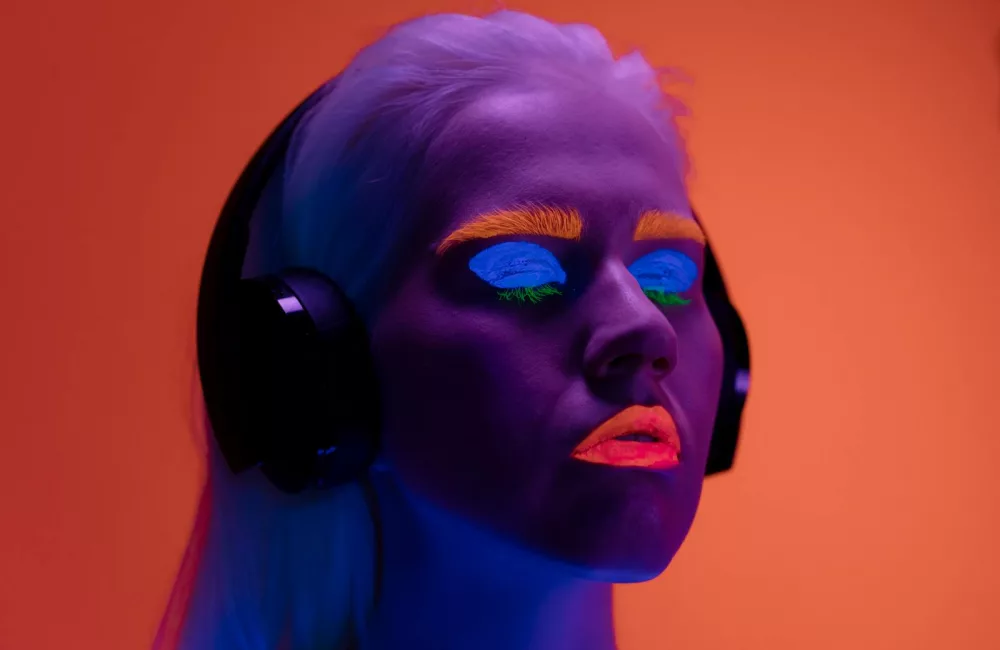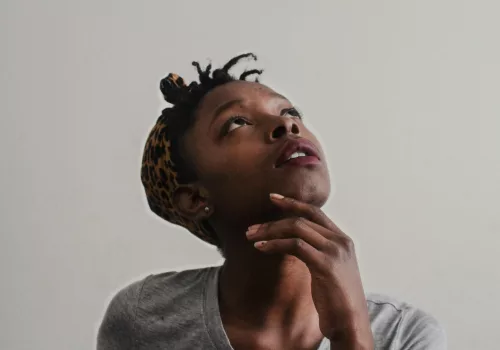Synesthesia, a rare and fascinating neurological phenomenon, allows some individuals to perceive a crossover of senses—such as seeing colors when they hear music, tasting words, or associating numbers with specific textures. While this blending of senses might sound like a scene from a science fiction novel, it is a real condition that affects roughly 2–4% of the population. For those who experience synesthesia, the perception is involuntary, consistent, and as natural as ordinary sensory experiences are for everyone else.
Scientists have long been intrigued by synesthesia, as it provides a unique window into the workings of the human brain. Research into the condition reveals fascinating insights about how sensory information is processed, how perceptions are formed, and how individual differences in brain wiring can create extraordinary sensory experiences. Despite its rarity, synesthesia has inspired art, music, and literature, while also challenging conventional ideas about how humans perceive the world.
This article dives deep into the science, theories, and personal experiences behind synesthesia. It explores how and why synesthesia occurs, its different types, the genetics behind it, and how it influences creativity, cognition, and perception.
What Is Synesthesia?
The term “synesthesia” comes from the Greek words syn (together) and aesthesis (sensation), meaning “joined perception.” People with synesthesia, known as synesthetes, experience an automatic and consistent blending of sensory modalities. For example, a synesthete might see specific colors when hearing certain musical notes (chromesthesia), taste flavors when hearing words (lexical-gustatory synesthesia), or associate days of the week with spatial positions (spatial-sequence synesthesia).
Synesthesia is involuntary, meaning synesthetes do not consciously decide to experience these sensory overlaps. Instead, these experiences occur as natural and automatic as recognizing the color red or hearing a car horn. Importantly, synesthetic associations are consistent over time. For instance, a person who sees the letter “A” as red will consistently perceive it that way, even years later.
Types of Synesthesia
Synesthesia comes in many forms, each involving different sensory combinations. Below are some of the most common and well-documented types:
1. Chromesthesia (Sound-to-Color Synesthesia)
One of the most recognized types of synesthesia, chromesthesia occurs when sounds—such as music, voices, or everyday noises—trigger the perception of colors. For example, a synesthete might see blue when hearing a violin or golden hues when listening to a piano. These color perceptions are consistent for each sound, creating a vivid sensory experience that many describe as “seeing music.”
2. Grapheme-Color Synesthesia
In grapheme-color synesthesia, individuals perceive letters or numbers as inherently colored. For instance, the number “5” might always appear green, while the letter “B” is blue. This type of synesthesia is one of the most studied and affects a significant proportion of synesthetes.
3. Lexical-Gustatory Synesthesia
This rare form of synesthesia causes individuals to taste specific flavors when they hear or read certain words. For example, the word “table” might evoke the taste of chocolate, while “Monday” might bring the flavor of lemon. This type of synesthesia is less common but provides a striking example of sensory overlap.
4. Spatial-Sequence Synesthesia
In spatial-sequence synesthesia, individuals perceive numerical sequences, days of the week, or months of the year as existing in specific spatial arrangements. For example, someone might visualize a calendar as a circular shape surrounding them or see numbers ascending along a spiral.
5. Mirror-Touch Synesthesia
Mirror-touch synesthesia involves feeling physical sensations on one’s own body when observing someone else being touched. For example, seeing someone get tapped on their shoulder might cause the synesthete to feel the same sensation on their own shoulder.
6. Other Forms of Synesthesia
There are numerous other variations, including:
- Ordinal-Linguistic Synesthesia: Associating ordered sequences (e.g., numbers, days of the week) with personality traits.
- Emotion-to-Color Synesthesia: Experiencing specific colors in response to emotions.
How Common Is Synesthesia?
Although synesthesia is considered rare, its exact prevalence is difficult to determine due to the subjective nature of the condition. Studies estimate that between 2–4% of the population has some form of synesthesia, though the frequency may vary depending on the type. Many synesthetes are unaware that their experiences are unusual, assuming that others perceive the world in a similar way.
What Causes Synesthesia?
The precise causes of synesthesia remain a mystery, but researchers have identified several key factors that contribute to its occurrence. These include unique brain wiring, genetic predisposition, and sensory integration processes.
1. Unique Brain Wiring
Synesthesia is thought to result from atypical neural connectivity, particularly in areas of the brain responsible for processing sensory information. In most individuals, the senses operate relatively independently, with limited cross-talk between sensory regions. In synesthetes, however, there appears to be increased connectivity between sensory-processing areas.
For example, chromesthesia (sound-to-color synesthesia) is linked to heightened communication between the auditory cortex (responsible for sound) and the visual cortex (responsible for sight). This increased connectivity could explain why hearing a sound triggers a visual color response.
2. Genetics and Heritability
Synesthesia often runs in families, suggesting a genetic component. While no single “synesthesia gene” has been identified, researchers believe that a combination of genetic factors influences the likelihood of developing synesthesia. Studies have shown that certain forms of synesthesia, such as grapheme-color synesthesia, are more likely to occur in families with a history of the condition.
3. Developmental Factors
Synesthesia is thought to originate during early childhood, a critical period for sensory development. Some researchers propose that synesthesia may result from incomplete “pruning” of neural connections during brain development. Normally, the brain refines its neural pathways by eliminating unnecessary connections, but in synesthetes, these connections may persist, leading to sensory overlap.
The Neuroscience of Synesthesia
Advances in neuroimaging techniques, such as functional MRI (fMRI) and magnetoencephalography (MEG), have provided valuable insights into the neural mechanisms underlying synesthesia.
1. Cross-Activation Hypothesis
The cross-activation hypothesis suggests that synesthesia arises from increased connectivity between adjacent brain regions. For example, the visual cortex and auditory cortex are located near each other, making it plausible that excess connections could lead to chromesthesia. These connections allow information from one sensory modality to activate another, resulting in a synesthetic experience.
2. Disinhibited Feedback
Another theory proposes that synesthesia results from disinhibited feedback between higher-order and lower-order sensory areas. Normally, feedback mechanisms regulate how sensory information is processed and interpreted. In synesthetes, this regulation may be less stringent, allowing sensory signals to spill over into other modalities.
Synesthesia and Creativity
Synesthesia is often associated with heightened creativity, and many famous artists, musicians, and writers are thought to have been synesthetes. This connection may stem from the unique sensory experiences that synesthesia provides, offering novel ways to perceive and interpret the world.
1. Synesthesia in Art
Visual artists like Wassily Kandinsky and David Hockney are known for incorporating their synesthetic experiences into their work. Kandinsky, for instance, reportedly saw colors when he heard music, which influenced his abstract paintings. Synesthetic art often reflects the vivid and consistent associations that synesthetes experience, providing a glimpse into their unique sensory worlds.
2. Synesthesia in Music
Many synesthetic musicians attribute their creativity to their condition. For example, composer Olivier Messiaen experienced sound-to-color synesthesia, describing specific musical chords as evoking vibrant hues. Pop artist Pharrell Williams has also spoken about his chromesthesia, which allows him to “see” his music in colors.
3. Literature and Synesthetic Metaphors
Synesthesia has inspired literary descriptions that blend sensory modalities, such as describing a sound as “sweet” or a color as “loud.” Writers like Vladimir Nabokov, a confirmed synesthete, used their condition to enrich their prose with evocative imagery.
Implications for Perception and Cognition
Synesthesia challenges traditional notions of sensory perception by demonstrating that the boundaries between senses are more fluid than previously thought. It raises important questions about how the brain integrates sensory information and how individual differences in neural wiring shape our experiences.
1. Enhancing Perception
Studies suggest that synesthetes may have enhanced perceptual abilities, such as better memory or sharper sensory discrimination. For example, grapheme-color synesthetes often perform better on tasks involving visual patterns or color recognition.
2. Individual Variation
Synesthesia highlights the incredible diversity of human perception. While synesthetes experience the world in a way that differs from the majority, their experiences are no less valid or “real.” This diversity underscores the brain’s capacity for creativity and adaptability.
Synesthesia is a captivating phenomenon that blurs the boundaries between sensory modalities, offering a unique lens through which to study perception, brain connectivity, and creativity. While much about the condition remains mysterious, advances in neuroscience and genetics are shedding light on how and why synesthesia occurs. For synesthetes, the world is an extraordinary tapestry of interconnected senses, where sounds have colors, words have tastes, and numbers evoke textures.
As research continues, synesthesia not only deepens our understanding of the human brain but also inspires art, music, and literature, reminding us of the vast and varied ways in which people experience reality. By unraveling the mystery of synesthesia, we gain a richer appreciation for the complexity and creativity of the human mind.






